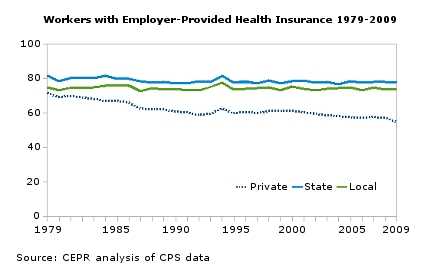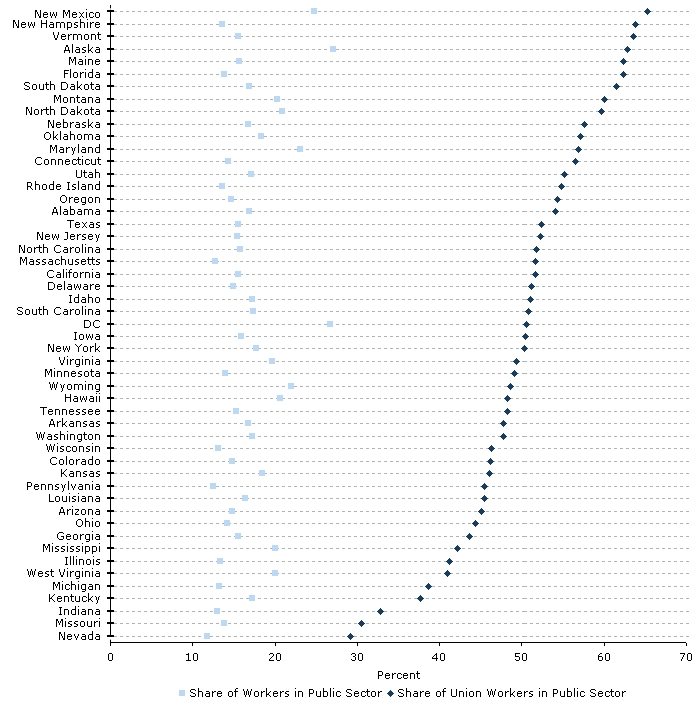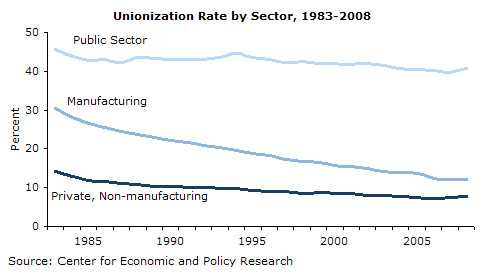March 08, 2011
With the recent spate of attention to public sector workers, here’s a (hopefully handy!) summary of CEPR resources about them and public pension funds:
The Origins and Severity of the Public Pension Crisis
This paper shows:
- Most of the pension shortfall using the current methodology is attributable to the plunge in the stock market in the years 2007-2009.
- The argument that pension funds should only assume a risk-free rate of return in assessing pension fund adequacy ignores the distinction between governmental units, which need be little concerned over the timing of market fluctuations, and individual investors, who must be very sensitive to market timing.
- The size of the projected state and local government shortfalls measured as a share of future gross state products appear manageable.
Returns on Public Pensions: What Rates Should We Assume?
An explanation that state pension plans should make their projections based on the expected value of their stock holdings. For a fund assuming 3% inflation, that translates into the nominal 9.5-10.0% yield that most assume for the portion of their funds held in stock.
Bottom is Falling Out for Private-Sector Workers
Since the end of the 1970s, the policy changes that got into full swing under Ronald Reagan have actually pulled the bottom out of the private sector. The public sector isn’t pulling ahead –the private sector is falling behind the standard that it long provided.

Hard Work in the Public Sector
A large share of public sector workers are in physically strenuous jobs. If the retirement age were increased, many of these workers, due to the physical challenges of their jobs, would have to leave the workforce before they are eligible for full retirement benefits.
The Wage Penalty for State and Local Government Employees
When state and local government employees are compared to private-sector workers with similar characteristics, state and local workers actually earn 4% less, on average, than their private-sector counterparts. This paper examines the wage penalty for working in the state-and-local sector.

The Wage Penalty for State and Local Government Employees in New England
When compared to private-sector workers with similar characteristics, state and local workers actually earn less, on average, than their private-sector counterparts. On this basis, the wage penalty for state and local government workers in New England is close to 3%.
The Benefits of Local and State Government Employees
Once differences in age and education are factored in, state and local public workers earn less, not more, than their private-sector counterparts. But what about benefits?
The Unions of the States
This paper finds that the share of each state’s employees that are in the public sector varies between about 10 and 20%. But, the share of all unionized workers that are in the public sector varies from under 30% to over 60%.
Share of Workers in Public Sector and Share of Public Sector Workers in Unions, 2003-2009

The Changing Face of Labor, 1983-2008
In 2008, public sector employees were about 1/2 of the unionized workforce, up from just over 1/3 in 1983. Over the same period, public sector employees have remained about the same share of all employees, falling only slightly from 17.6% in 1983 to 16.5% in 2008.
The unionization rate has fallen much less in the public sector than it has in the private sector. Between 1983 and 2008, the percent of public-sector workers who were in a union or covered by a union contract slipped from about 46%to about 41%. By contrast, in the private sector, unionization fell by more than half, from 18.5% of all private-sector workers in 1983 to 8.4% in 2008.







